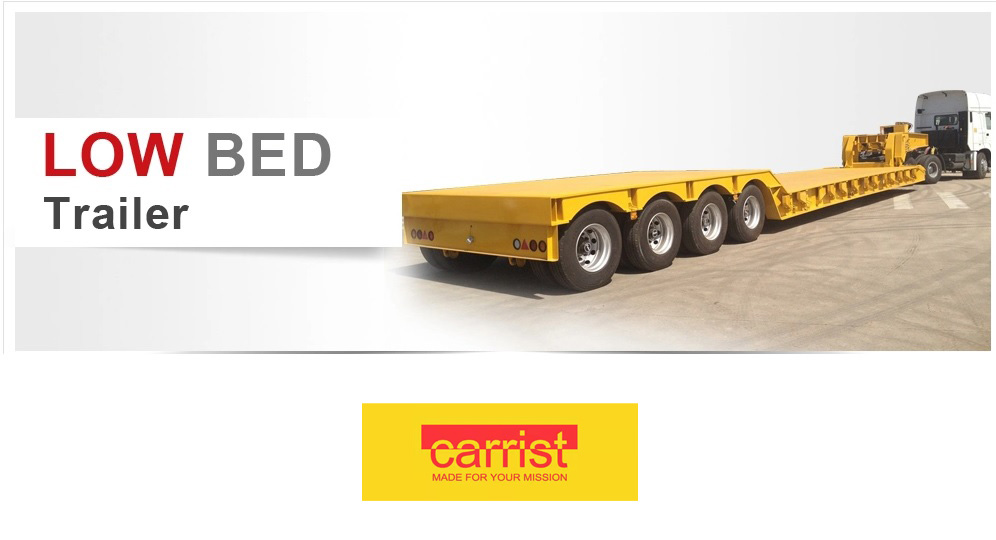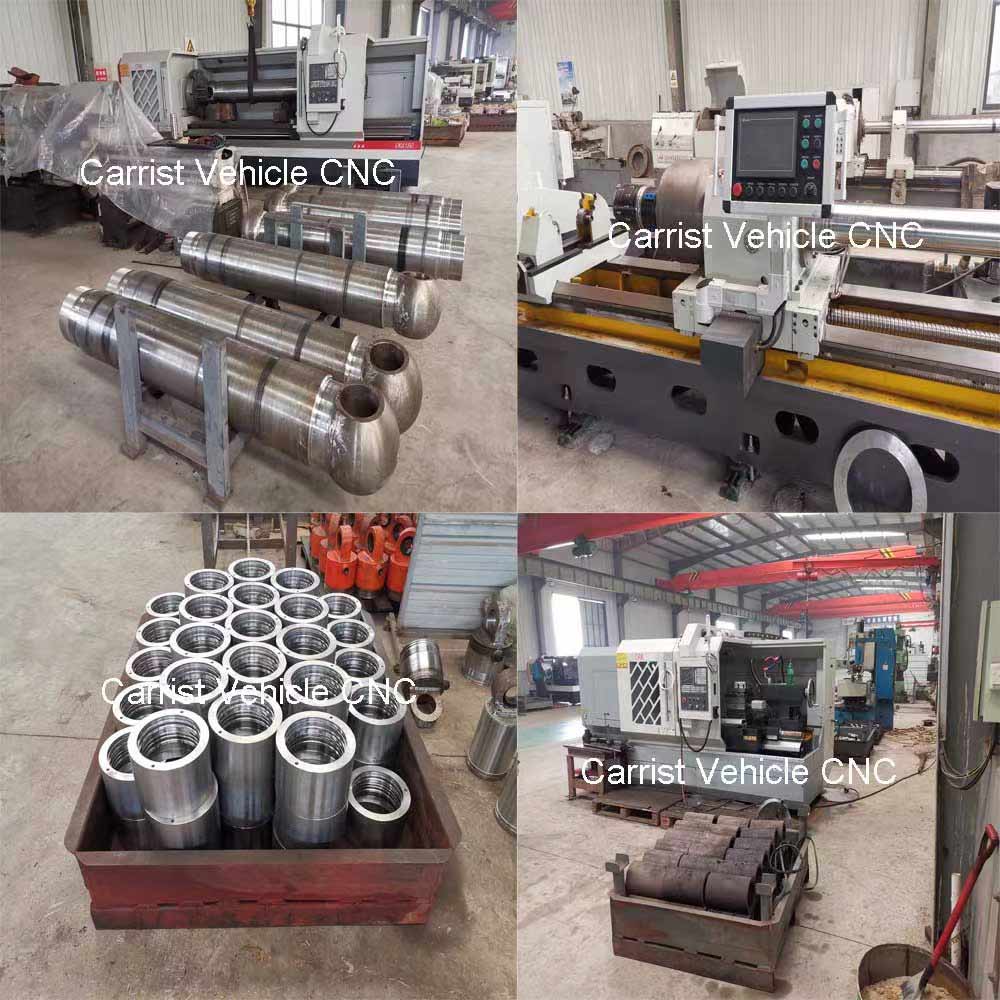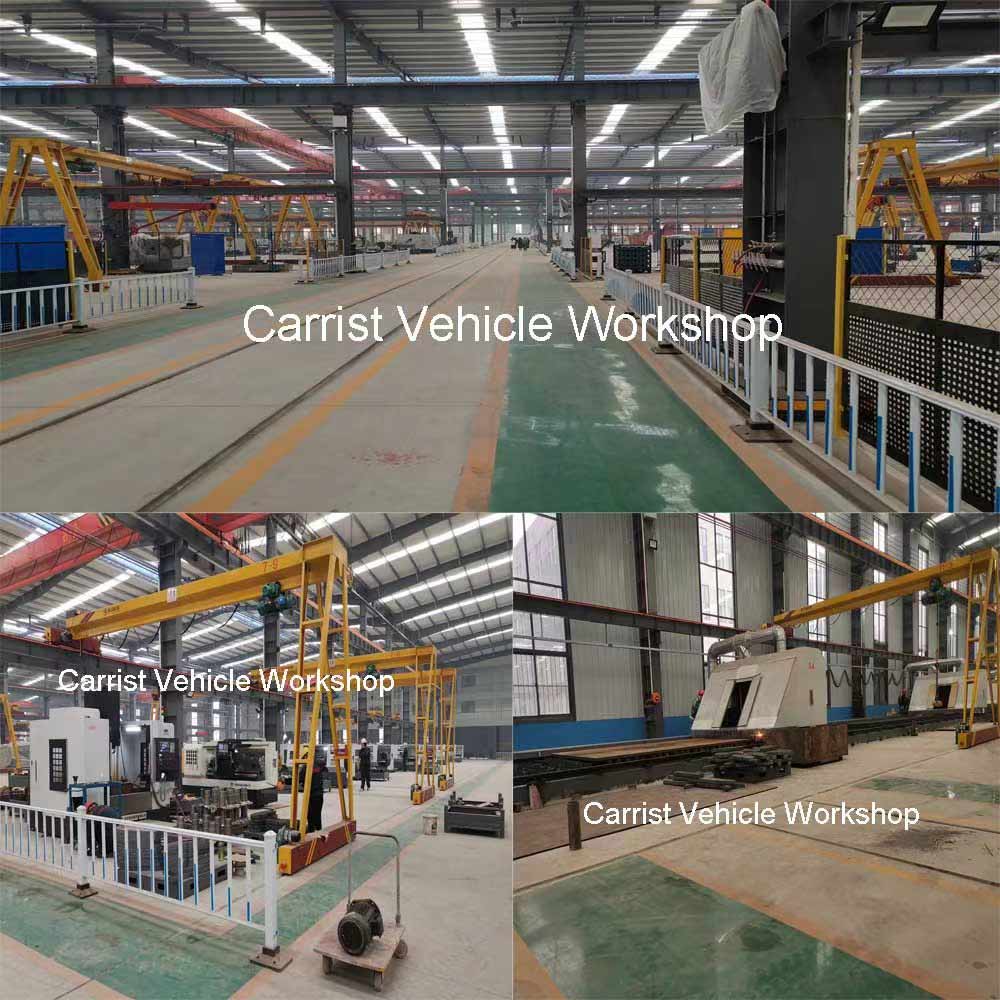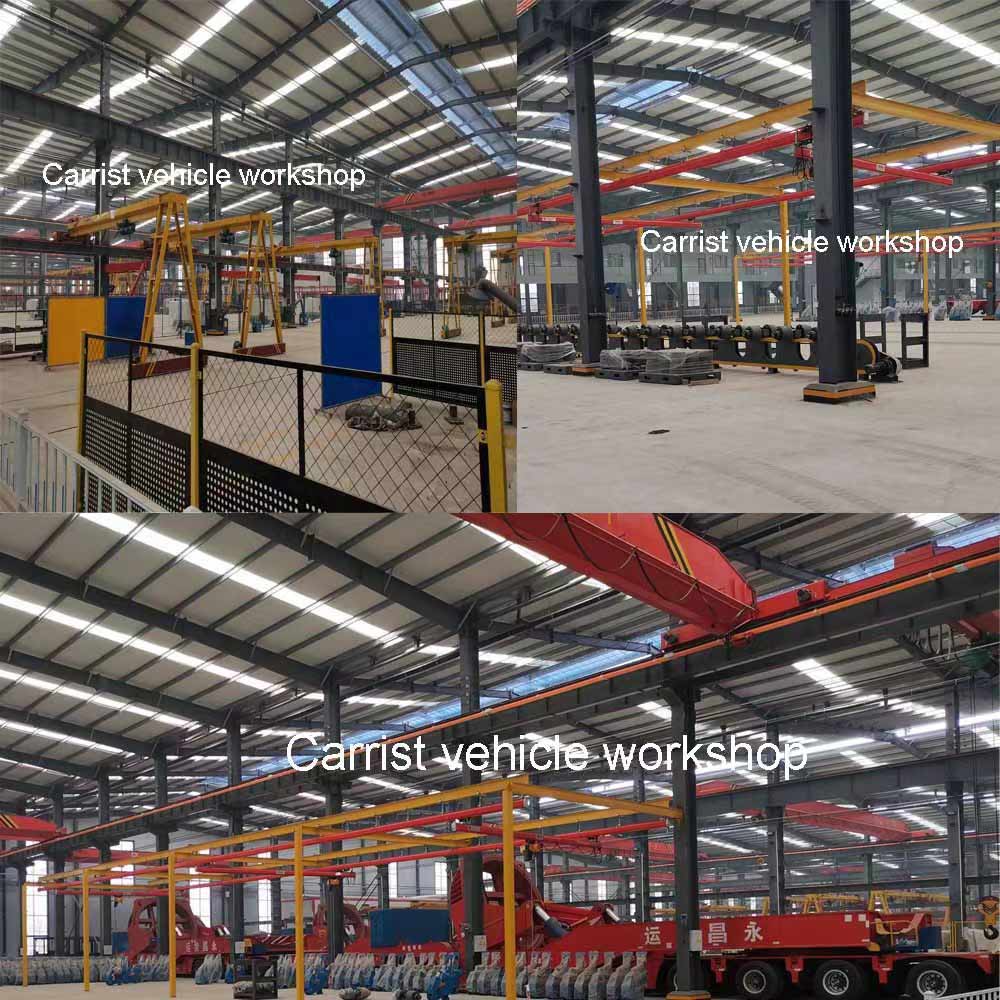Lowbed Trialer For sale
Carrist's lowbed semi trailer offers several advantages:
Lightweight Design: The lowbed semi trailer is designed with lightweight materials, reducing its overall weight. This enhances fuel efficiency, allowing for cost savings in terms of fuel consumption.
Low Loading Height: The lowbed design provides a lower loading height compared to traditional trailers. This makes it easier to load and unload heavy equipment, machinery, and oversized cargo. It reduces the need for additional equipment such as cranes or ramps, saving time and resources.
Enhanced Flexibility: The lowbed semi trailer's design allows for versatile applications. It can transport a wide range of heavy and oversized goods, including construction equipment, industrial machinery, and vehicles. The lower deck height also enables the transportation of taller cargos, ensuring compatibility with various industries.
Durability and Longevity: Carrist's lowbed semi trailer is built using high-quality materials and advanced manufacturing techniques. This ensures its durability and longevity, even when subjected to rigorous transport conditions and heavy loads. The trailer can withstand wear and tear, providing a reliable and long-lasting transport solution.
Safety and Stability: The lowbed semi trailer is designed with safety and stability in mind. It incorporates advanced suspension and braking systems to ensure smooth and secure transport. It also features various safety features such as anti-lock braking systems (ABS) and safety ramps, contributing to a safer transportation experience.
Carrist Lowbed Trailer Specificaton
Capacity: Lowbed trailers typically have varying weight capacities, ranging from 20 to 150 tons or more. The specific capacity will depend on the model and design of the trailer.
Deck Length: Lowbed trailers come in different deck lengths to accommodate various cargo sizes. Common lengths include 40 feet, 45 feet, and 48 feet. Some trailers may also offer extendable or telescopic deck options for additional length flexibility.
Deck Height: One of the main advantages of a lowbed trailer is its low deck height, which allows for easier loading and transportation of tall cargo. The typical deck height range is around 12 to 24 inches, but it can vary depending on the specific model.
Suspension System: Lowbed trailers often feature heavy-duty suspension systems to withstand the weight of the cargo. These may include air suspension, leaf spring suspension, or hydraulic suspension, providing stability and shock absorption during transport.
Ramps: Most lowbed trailers have built-in ramps or loading ramps that can be deployed to facilitate the loading and unloading of heavy equipment. These ramps are typically adjustable and designed to withstand heavy loads.
Axles: Lowbed trailers may have multiple axles to distribute the weight of the cargo evenly. Common configurations include two-axle, three-axle, and multi-axle trailers. The axles are usually equipped with braking systems for enhanced safety during transportation.
Lighting and Safety Features: Lowbed trailers are equipped with a comprehensive lighting system, including LED or halogen lights, reflectors, and turn signals, to ensure visibility on the road. They may also include safety features like ABS (anti-lock braking system), EBS (electronic braking system), and side underride protection.
Material and Construction: Lowbed trailers are typically constructed with high-strength steel or aluminum alloy, providing durability and load-bearing capabilities. The materials used may vary depending on the manufacturer and specific trailer model.







